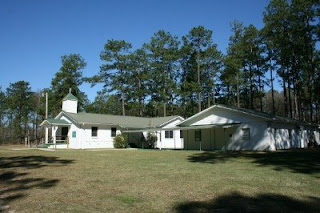This article appeared in this week's issue of the Jackson County Times. I thought you might enjoy reading it:Econchattimico Goes to Court
by Dale Cox
Lake Seminole – One of the most remarkable court cases in American history took place in Jackson County in the year 1836.
On one side was the Lower Creek chief Econchattimico (“Red Ground King”) who lived on a reservation about 10 miles north of present-day Sneads. On the other side was a white speculator that hoped to take a group of African Americans living on the chief’s reservation into slavery. This man’s name was John Milton and he was the future Confederate governor of Florida.
Under Creek law, the property of a chief passed down to the chief’s brother, rather than to his sons. When the brother died, the former chief’s property then passed on to the chief’s sister’s oldest son. This was because under Creek law, the chief’s oldest nephew (his oldest sister’s oldest son) was next in line to become chief. The sons of a chief had no rights to his estate.
Econchattimico was the nephew and heir of a chief named Falehigee. Living with Falehigee at the time of his death were four African Americans named Sally, Hannah, Tyler and Tom. Under white culture of the time, they were considered slaves. Under Native American culture, they were under the guardianship of the chief. A portion of their crops was given to the chief each year, but otherwise they were free to enjoy life pretty much as they chose. They could come and go, marry, participate equally in tribal events, own firearms and property, and take part in Creek war parties on equal terms with other members of the village.
In 1832, a group of Creek chiefs signed what became known as the Treaty of 1832. This document, signed against the wishes of most in the nation, provided an agreement for the Creeks to either leave for new land west of the Mississippi or lose their protection from the Federal government.
Anticipating the wholesale “removal” of the Creeks, white speculators began to purchase rights to Indian property. One of these speculators was a Columbus, Georgia, resident named John Milton. A future Florida resident who would become the Confederate Governor of the state, Milton purchased a bill of sale for ten African Americans from a Creek man named Hawkins. It had been obtained from Wamelika, a son of Falehigee.
When Milton tried to take possession of the individuals covered by his “bill of sale” to take them into slavery in Georgia, however, he found that they were living with Econchattimico and that the chief had no intention of allowing the whites to take them. Milton promptly filed suit in Jackson County.
The matter was referred to James D. Wescott, the acting Governor of Florida, who notified U.S. District Judge J.A. Cameron. The judge placed a hold on any action by the Jackson County court until he could review the matter. Milton quickly realized that there were problems with his “purchase” and dismissed his claim. He did, however, sell his “bill of sale” to other speculators.
After a detailed review of the matter, Judge Cameron issued a remarkable ruling that Creek law should be followed in the matter. Econchattimico, the judge determined, had acted legally when he defended the individuals in question. It was a remarkable case of a Federal judge upholding the rights of Native Americans and African Americans at a time when non-white individuals were extremely limited by law in their rights to participate in the judicial system.
Sadly, it did not end there. Just weeks after Cameron’s ruling, the speculators that had purchased Milton’s claim entered Econchattimico’s reservation, severely beat the old chief and carried away ten African American members of his band. Although a U.S. Grand Jury in Marianna indicted the speculators for felony theft, they were never brought to justice and the kidnapped members of Econchattimico’s tribe were never returned.





